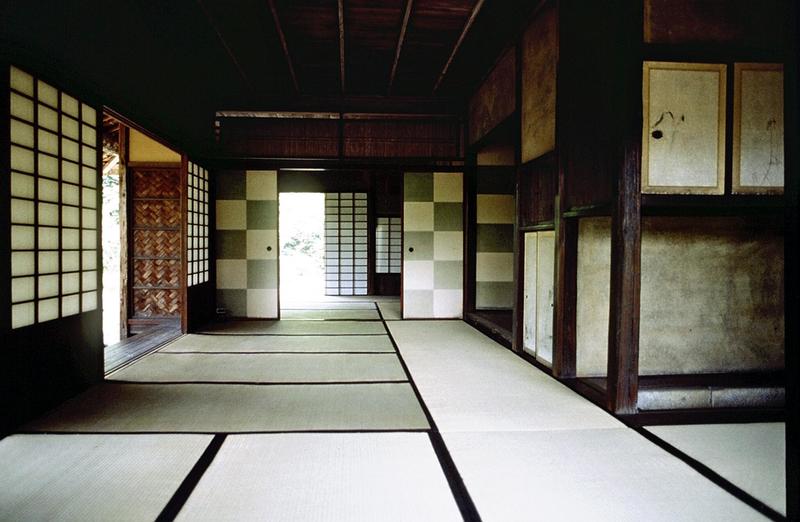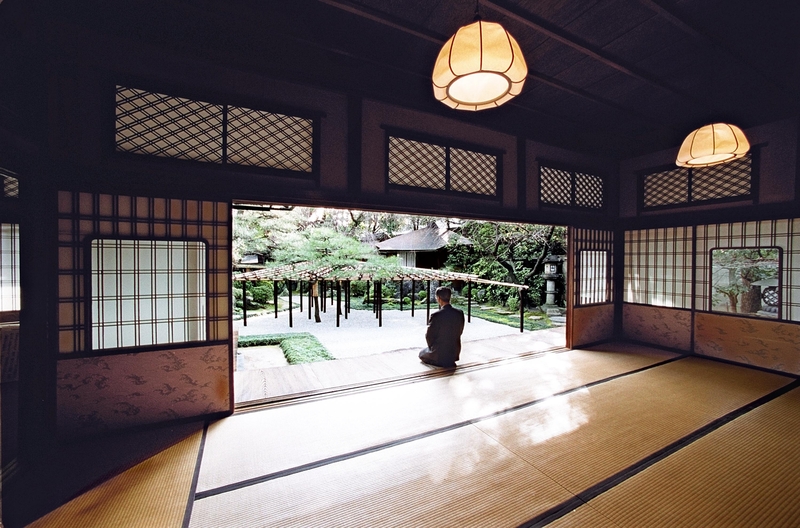
KYOTO -- When geiko, known outside Kyoto as geisha, and maiko apprentice geiko are engaged to entertain customers, it is called "o-zashiki ga kakaru."
The literal translation of this expression into English probably doesn't make much sense. However, once you know that zashiki means a room with tatami mat flooring as well as a room for receiving guests, you may be able to envision its meaning.
Imagine you're an invited guest, shown into a zashiki room. If you find zabuton floor cushions arranged at low tables in the room, you need to think carefully about where to sit. Your choice will probably be correct enough if you think about what you would do in a Western-style room with tables and chairs.

In some cases, however, nothing is placed on the tatami-mat floor, particularly at gatherings for the tea ceremony. Where do you think is the right seat?
During the Heian period, which started in the late eighth century, when Kyoto became this country's capital, and continued until the late 12th century, the aristocracy's residences were built in a style called shinden-zukuri, which had no tatami-mat zashiki rooms, just rooms with wooden flooring. Those rooms had very few indoor walls. They were just partitioned by portable screens, which gave them large open spaces inside.
Visitors knew where to sit because small tatami mats or enza (round, woven-straw cushions) were neatly placed in the room.
During the following rule of the samurai class, the shogun Ashikaga Yoshimitsu built Kinkakuji temple in the Kitayama area in Kyoto around the end of the 14th century. The temple's interior had wooden floors. In contrast, Ginkakuji temple, built a century later in Kyoto's Higashiyama area by his grandson Ashikaga Yoshimasa, had rooms with tatami mat flooring.
The temple has a building called Togudo that contains a 4.5-tatami-mat room. The floor of this square room, a little less than three meters on each side, is tightly covered with four tatami mats in the regular size and one half-size mat. The shogun used this room as a study. He displayed tea ceremony utensils on the shelves along a wall, and enjoyed tea and sometimes flower arrangement.
These practices developed into the tea ceremony and the art of Japanese flower arrangement today, both leading elements of culture related to the Japanese lifestyle.
The French word tatamiser means living a life with tatami and other Japanese elements, or in a broader sense, being a Japanophile. This word makes a lot of sense, because the typical Japanese lifestyle originated from tatami mat zashiki rooms in the samurai houses.
A small 4.5-tatami-mat room became the standard size for rooms in Japanese houses. Chashitsu, which means rooms exclusively built and used for the tea ceremony, have various sizes today, but their standard size has been 4.5-tatami-mat space.
Zashiki rooms initially had various decorative features, such as built-in shelves in several different designs. The most favored among them was the tokonoma alcove. In later years, many zashiki rooms had no decorative features except for tokonoma.
A tokonoma is a small space where paintings, fresh flowers or other ornaments are on display. Returning to my question at the beginning of this article, if you are a guest, you should sit with your back to the tokonoma. Some may complain that this doesn't allow them to see the paintings or flowers in the tokonoma, which the host must have carefully chosen and arranged to entertain you.
There is a good solution, which can even be part of observing good manners. On entering the zashiki, you first sit on the floor facing the tokonoma and admire the ornaments there. Then you turn to the other people in the room.
If maiko or geiko entertainers join in, they usually sit in front of you or next to you. All you have to do in this situation is just appreciate their beauty.
* * *
This column, which appears once a month, is about various aspects of the culture of Kyoto.
Mori was born and raised in Kyoto. He has 30 years of experience in reporting about Kyoto culture. He has extensively covered scholars of the New Kyoto school, the heads of tea ceremony and flower arrangement schools, as well as maiko in the Gion area of the city.
Read more from The Japan News at https://japannews.yomiuri.co.jp/







